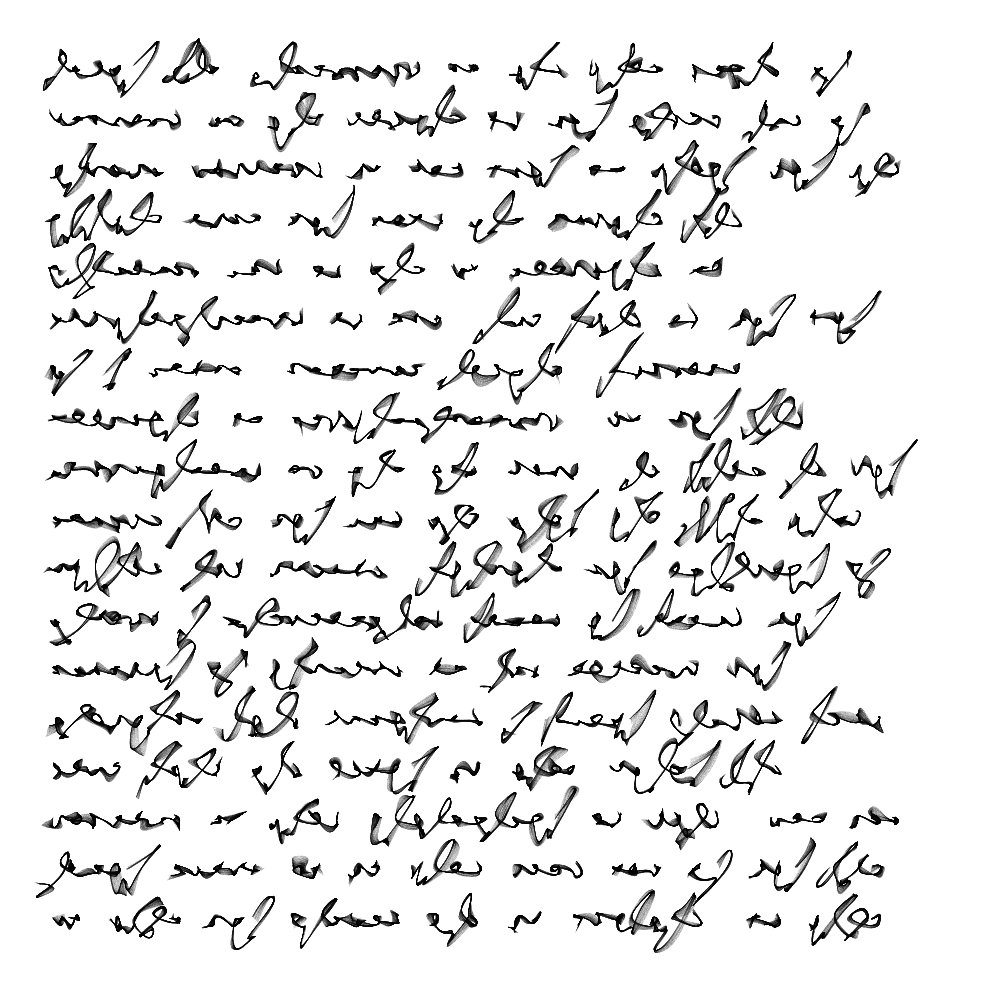This library is specifically written to be useful for a broad range of ways in which I create art using various generative algorithms.
In short snek is four things:
-
A simple (graph) data structure for working with vertices and edges The structure is named
snek; the name is explained below. This structure is combined with a programming pattern for applying changes to the structure. The pattern relies onalterations, see below. -
A series of useful data structures and tools. E.g. a 2D vector
vec, a package for generating different kinds of random numbers:rnd, as well as tools for handling colors (color), splines (bzspl), and various vector an path functionality (math,lin-path). -
A tool for drawing things called
sandpaint.sandpaintuses random sampling to draw its primitives. This creates a fairly distinct and gritty look in many cases. -
A tool for drawing svg files (
draw-svg). Mainly svg files that are good for plotting.
A while back someone on Twitter suggested that if Python 3 was named "snek" it
would avoid naming confusion. I found that amusing at the time, and picked
snek as the placeholder name for this project. I've been looking for a better
name, but I haven't found one yet.
The pattern depends on the concept of alterations. In short: an alteration
is a change that will be applied to the structure at the end of a given
context. alterations are further described in
https://inconvergent.net/2017/snek-is-not-an-acronym/.
I have also written about things related to snek at
- https://inconvergent.net/2017/a-propensity-for-mistakes/ (indirectly about
snek) - https://inconvergent.net/2017/a-method-for-mistakes/
- https://inconvergent.net/2017/arbitrary-alterations/
- https://inconvergent.net/2017/grains-of-sand/
Here is and example of manipulating a snek instance called snk using
alterations. Alteration constructors are postfixed with ?.
; context start
(snek:with (snk)
; iterate vertices
(snek:itr-verts (snk v)
; move alteration
(snek:move-vert? v (rnd:in-circ 1d0))
; w will be an arbitrary
; vertex in snk
(snek:with-rnd-vert (snk w)
; join v and w if they are closer than d
(if (< (snek:edge-length snk (list v w)) d)
; join vertices alteration
(snek:join-verts? v w))))
; context end
; alterations have been appliedYou can also manipulate the state directly. These functions are postfixed with
!. Eg. (snek:move-vert! ...).
There are some examples included. All examples are in the examples folder.
If you don't provide a filename (with full or relative path) as the first
argument, the resulting file will be named ./tmp.png.
You can define your own arbitrary alterations. There is an example of this in
ex/custom-alt.lisp. I have also written about it here:
https://inconvergent.net/2017/arbitrary-alterations/
I use snek for most of the work that I post online (https://twitter.com/inconvergent). Both for generating raster images as well as vector images for plotter drawings.
Here are some plotted examples:
- https://inconvergent.net/2017/spline-script-plots/
- https://inconvergent.net/mechanical-plotter-drawings/
- https://inconvergent.net/mechanical-plotter-drawings/3/
- https://inconvergent.net/mechanical-plotter-drawings/5/
This code requires libpng-dev, Quicklisp, zpng, cl-svg and cl-png.
The path to quicklisp must be set in src/load. zpng, cl-svg and cl-png
are automatically installed via quicklisp.
There are some tests included, see the test folder.
This code is highly experimental on my part. It is likely to change with no
warning or explanation. I will keep a note of the version number in
src/load.lisp.
I would like to thank:
Who have provided me with useful hints and code feedback.



